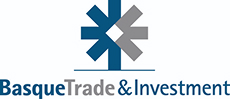ASEAN
The ASEAN (Association of Southeast Asian Nations) is a region of growing interest for Basque companies due to its rapid economic growth, its young and dynamic population, and the role of one of its members, Singapore, as an Asia-Pacific strategic hub. This territory – home to some of the world’s most dynamic economies, such as Vietnam, Indonesia or Philippines – represents a potential market of over 600 million people, with significant opportunities in sectors such as manufacturing industry, renewable energy, mobility and infrastructure. Furthermore, the trade agreements of many of its members with the EU facilitate access to the region, while the growing demand for high value-added products and technological solutions are a lure for the internationalisation and diversification of Basque companies.
The region with greatest economic growth of the world
The ASEAN region holds a strategic global position as one of the world’s dynamic economic blocks. Its 10 member countries total a market of over 600 million people and with a combined GDP that positions ASEAN as the fifth largest economy globally. ASEAN is a key hub in international supply chains, particularly in sectors such as manufacturing, electronics, maritime trade and technology. Furthermore, its geographical location connects the main trade routes between Asia, Europe and the Americas, which bolsters its importance in the global economy. Thanks to agreements such as the Regional Comprehensive Economic Partnership (RCEP), ASEAN is extending its influence in international trade, consolidating its position as a driver for growth and a lure for foreign direct investment.
Pablo Huidobro
Director of Basque Trade & Investment ASEAN
BASQUE TRADE & INVESTMENT SINGAPORE
1 Wallich St, #14-01 Guoco Tower, Office 1452, Singapur 078881
* Office hours:
Monday to Thursday: 7.30 a.m. to 4.00 p.m.
Fridays: 8.00 a.m. to 1.00 p.m.
